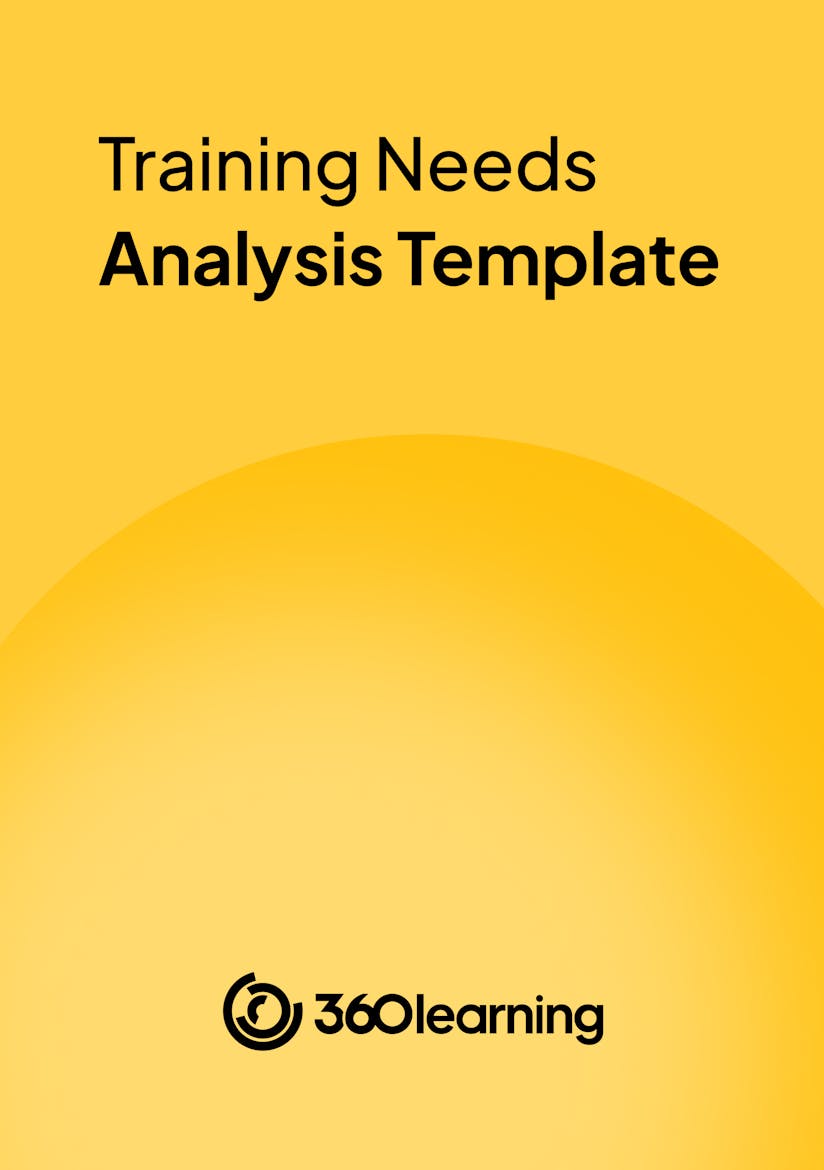
L&D Plus Talent: How Zapier’s Internal Mobility Program Helps Boost Organizational Resilience
As a leading integrations platform, Zapier helps automate your most important work. And like many companies around the world, right now Zapier is navigating one of the most important workplace questions there is: optimizing existing talent resources when the pace of hiring slows down.
So, how does Zapier use its internal mobility program to soften the impacts of a hiring slowdown? And how can Zapier ensure its most talented members have the chance to grow and upskill, even when budgets are shrinking?
In the latest episode of the L&D Plus podcast, we chatted to Tracy St. Dic, Zapier’s Global Head of Talent, and Colin Monaghan, Head of Learning & Development, to find out how talent and L&D can work together to help talented people upskill from within with the right internal mobility program.
If you’re saving the podcast for later, we've distilled the main takeaways below.
Are internal mobility programs the right move in uncertain times?
Like a lot of companies, Zapier is hiring more modestly in 2023, and getting the most out of its investments in talent made throughout 2022. As part of this pivot, Zapier has expanded its secondment program: an internal mobility program allowing employees to move to a role or project outside the job for which they were initially hired.
But are these kinds of internal mobility programs the right move in uncertain times? According to Tracy, absolutely.
“When companies are faced with a slowdown in hiring, they typically have a few choices,” she says. “They can eliminate roles right away, which we saw in many places had to be the choice. Or they can wait and see, which isn’t a great business strategy. Or, companies can reallocate to make better use of their talent.”
“At Zapier, we know that people’s potential and their abilities go beyond their current core job responsibilities,” Tracy continues. “With that understanding, we thought about our internal secondment program as a product in response to a clear problem statement. That’s when we launched our formal temporary reassignment program where teammates are redeployed to a role to work on a project outside of what they were hired to do.”
For Colin, the program was a great chance for talented people to grow within the company. “We really value our people, and we know they’re capable of wonderful things. And so, we were able to find places for them to continue to add value in a way that helped them and helped the company. We’d offered secondments before, but this was our chance to make it more extensive, more equitable, and a more organized process for the company.”
So, how exactly did Tracy and Colin work together to create internal mobility that works? As they explained, it’s all about four key factors.

Simplify your training needs analysis with our free template
By providing your contact info, you agree to receive communications from 360Learning. You can opt-out at any time. For details, refer to our Privacy Policy.
4 key factors shaping Zapier’s internal mobility program
Getting an internal mobility program up and running can sound daunting, but it doesn’t have to be. You just need to know where to start.
1. Look for the most natural skills matches first
As Tracy explains, it helps to start your internal mobility program by focusing on the most natural matches between skills and roles.
“When we did our first round of secondment matching, we focused on the easier and more relevant skills matches,” says Tracy. “For example, we had a number of people from talent acquisition go into other people-related roles, to support our L&D initiatives or our diversity, inclusion, belonging, and equity team.”
“We also matched a secondee who had completed our ‘Golden Path to Data’ program on data analytics with a role in our data science team. It was really a win-win situation.”
For Colin, these skills matches gave people at Zapier an opportunity to focus on their development goals. “We really want to make sure people are deliberate about their own growth plans. What are their strengths, and their interests? And how does that translate into the skills they want to build? Our internal secondment program is a fundamental piece to help people make connections between their goals and the business needs.”
Our internal secondment program is a fundamental piece to help people make connections between their goals and the business needs.
2. Rank potential secondments in terms of business need
As Tracy explains, it’s key to rank potential secondments in order of business need. “Once we solicited secondment projects from partners across the business, we ranked them in order of importance. What are the most important projects for the business to staff right away? We actually had members of the executive team confirm the business need, so we knew we were working on the secondments with the highest ROI.”
“Then, we asked secondment leads to share high-level goals for the secondment, as well as a desired skills profile. They might need a strong project manager, or someone experienced with Figma or Looker, or someone familiar with the engineering team. We were then able to prioritize the best skills match with the most critical business need.”
“We weren’t just giving people busy-work,” says Colin. “Every secondment involved key strategic work the company wanted to move forward. It helps the company a lot, but it also helps the secondees to know they were part of something meaningful.”
3. Put secondees in the driver’s seat
For Colin and Tracy, it was also crucial for secondees to feel empowered and supported throughout every step of Zapier’s internal mobility program. That’s why they wanted to help secondees to be firmly in control of their options.
“Once we had the goals and skills profiles for each secondment, we created a list for all of our secondees to review, and asked them to share their preferred options with a clear rationale,” says Tracy. “They were really in the driver’s seat, because they were able to say: ‘here are my relevant skills, here’s the experience I’ve had, here’s my career interest’.”
4. Remember: transparency is everything
Zapier built its internal mobility program with a high degree of transparency. As Tracy explains, there was no other option. “Transparency is one of our core values at Zapier, so we really default to full transparency. That’s why every secondee saw the full list of open roles, and the full list of desired skills relevant for each project.”
“Framing it around being a matching process between skills and role was really helpful. It wasn’t competitive–it was truly a question of how we could optimize to ensure everyone could be successful in their secondment and help the business.”
Related: How My2Be Helps Teams Learn by Stealth and Achieve DEI Goals
Zapier’s strong results and feedback from secondees
It’s clear Colin and Tracy have put a lot of time, energy, and effort into rolling out Zapier’s internal mobility program. So, how are secondees feeling about their experiences so far? And is the program driving the expected results?
“We’re getting really strong feedback on the program so far,” says Tracy. “On questions like, ‘have you learned valuable new skills?’ or ‘have you made meaningful connections with your temporary team?’, most of these questions averaged 4.5 or above on a scale of 5. So the quantitative feedback has been strong.”
“We’re also seeing people say they’re learning new skill sets, like employer branding, or insights research,” says Tracy. “It was really neat to see the connections people are making, and how they’ll be an even stronger recruiter or partner when they come back.”
As Colin explains, these benefits extend beyond hard skills. “One of the surprises for me has been that secondees aren’t just picking up new skills from different projects–they’ve also had the opportunity to experience a different team subculture. It’s because each team does things a little bit differently. They might have different rituals, and different ways of interacting with each other.”
The most important feedback of all? Secondees don’t want their new placements to end. “We originally timed our secondments to be a quarter each, but secondees told us this was too short, so we extended it to another quarter. This helps people to get a better idea of the skills matching, and make sure they can really make the right impact.”
Related: Why Internal Movement for Employees Should Be Your Top Priority in 2023
Secondees aren’t just picking up new skills from different projects–they’ve also had the opportunity to experience a different team subculture.
How L&D and Talent can work together to boost organizational resilience
For organizations concerned about the current economic downturn, it’s helpful to learn more about how companies like Zapier are using internal mobility as a tool to help boost organizational resilience and adaptability.
“Being able to rise out of economic slowdowns should be a priority for talent teams and company leaders everywhere,” says Tracy. “That’s why I’d love to see these secondments become a go-to strategy for leveraging internal talent whenever there’s a temporary surplus of capacity.”
Colin agrees. “All companies should think about ways to encourage as much internal mobility as they can. This can be formal or informal, because workers today really value options for career progression and growth. And the more ways you can provide a menu of options for them, the better–especially while driving business goals.”
Thanks again Tracy and Colin for joining us and sharing their expertise and insights!
For more inspiring and actionable L&D stories like this one, be sure to check out our other episodes of L&D Plus. And if you're looking for more great L&D resources and insights, come and join the L&D Collective and connect with more than 3,000 fellow learning leaders!

